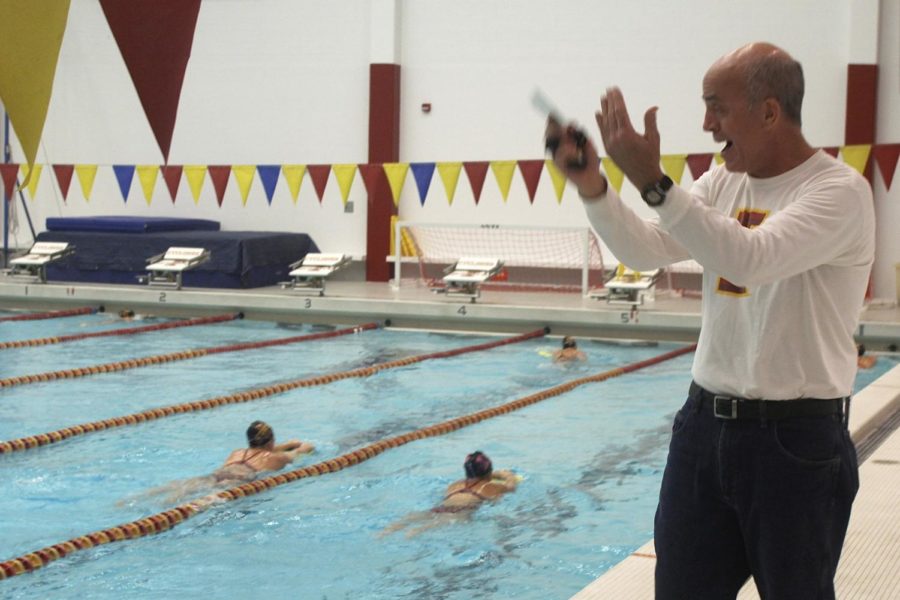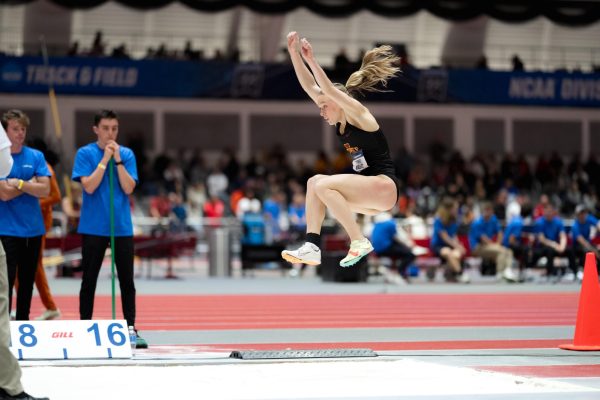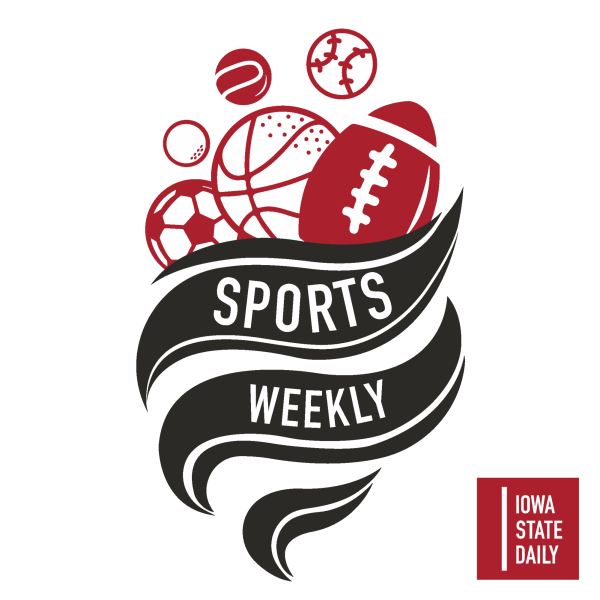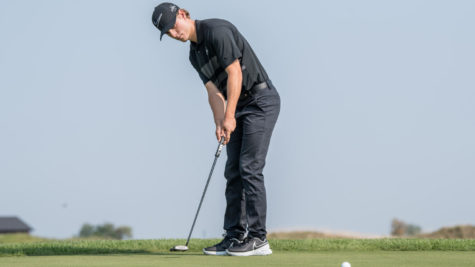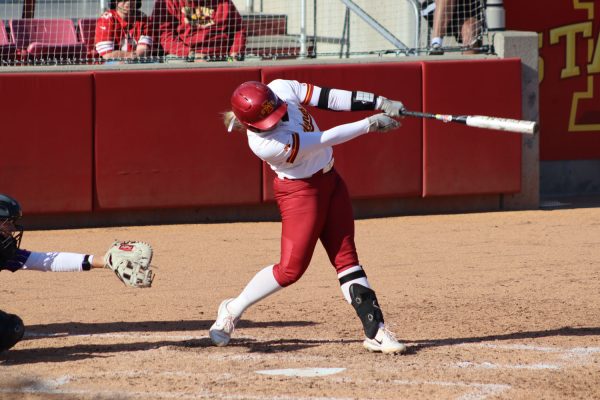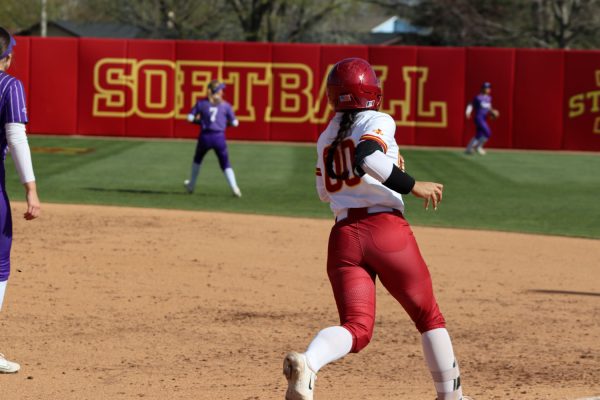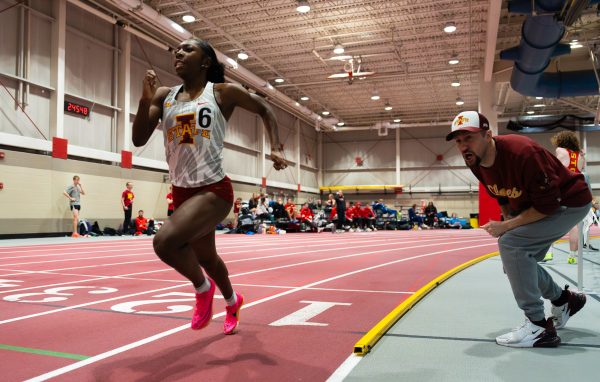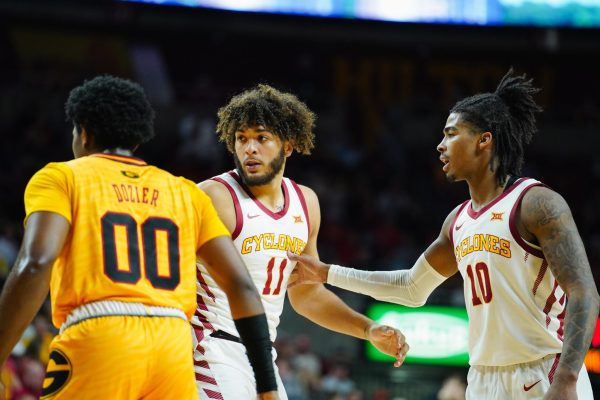Whistles, hand signals key to communication amongst ISU swimmers
Head Coach Duane Sorenson communicates with the women’s swimming and diving team using hand signals to compensate for limited communication in the sport.
January 30, 2014
Unlike football, basketball and almost all Division I sports at Iowa State, coaching in swimming is limited to before and after competition.
Before races, swimmers go over racing strategies with ISU head coach Duane Sorenson and assistant head coach Kelly Nordell. After the race, swimmers get feedback and try to fix what went wrong during upcoming practices.
While communication does exist during races, it is very limited and only includes whistles and hand and arm signals.
Hand and arm movements have specific meanings, but as far as the whistle goes, ISU swimmers are expected to speculate as to what it means when they hear it blown from one of their coaches.
“Usually I can hear [Coach Nordell’s] whistle, and it either means to pick it up, or keep it going — one or the other,” said freshman Karyl Clarete. “I kind of base it off of what I do in the race.”
When a coach puts up both arms, it means the swimmer is usually doing well, and if the coach starts waving his or her arms emphatically, it means “get going.” If the swimmer is swimming all by themselves and the coach gives a “thumbs up” signal, that means she is right on pace.
“As a coach you don’t want them to make mistakes,” Sorenson said. “You know when they’re making a mistake and you want to correct it. When they do something wrong, then we kind of make a mental note of it, and try to come back to practice and work on those things.”
“In swimming, you only have one shot at it. It’s not like basketball or football where you can have a bad play, then turn around and have a great play.”
Prior to all meets, swimmers and coaches set up pre-race strategies. It is then up to the swimmers to execute those strategies and adjust during each race depended on how they are swimming.
“I speak with [the coaches] before and after [a meet]. With all of our training, I know what I need to do,” said sophomore Maria Gannon.
Swimmers said competing in races without communication between them and the coach has become second nature.
“I think I’ve just been use to it. I’ve been swimming my whole life, and you kind of just have to know what you are doing for yourself,” Clarete said.
ISU swimmers and divers will next be in action Feb. 1 when they travel to Athens, Ohio to compete in a double-dual meet against Ohio and West Virginia.
The Cyclones (4-3-1, 0-1 Big 12) will be competing in their first double-dual meet of the season and will attempt to keep their undefeated road record (4-0-1) alive.

